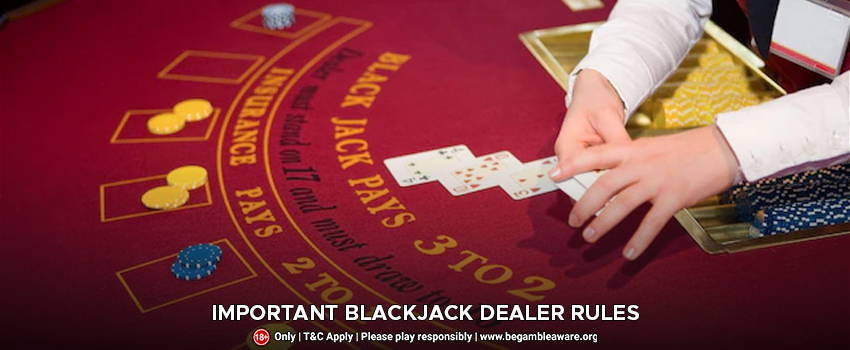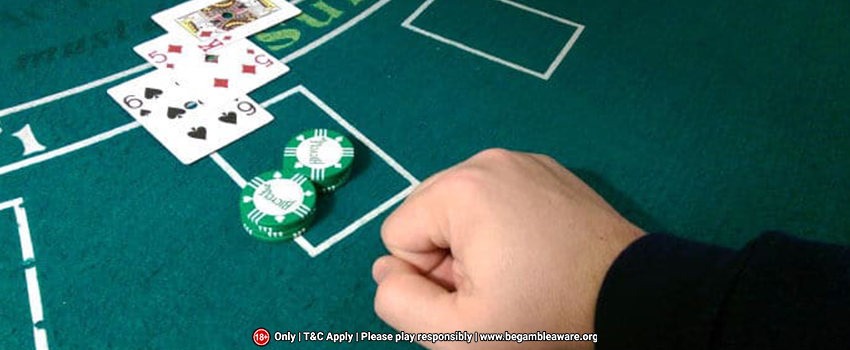Blog Posted on 17/02/2022 | Author: Karen Macarthur
Important Blackjack Dealer Rules

Blackjack is a common game in every gambling establishment, whether it’s an online or land-based casino. It’s among the most frequently played online casino games in addition to roulette and poker. Because of its popularity, many players are experimenting by playing this game.
When playing blackjack, you must be aware of the basic blackjack dealer rules to implement a strategy for blackjack. There are numerous beginner guides that you can download on the internet; however, most of them aren’t focused on the blackjack dealer rules at casinos.
It is essential to be aware of all aspects of the game to understand it better and make changes to blackjack strategies. Learn about the essential blackjack dealer rules right here.
Blackjack Dealer Rules: The Pack
The traditional 52-card pack is played. However, in many casinos, multiple sets of decks are mixed. The six decks (312 cards) game is the most played.
The dealer also utilizes a blank plastic card that is not played, but it is placed at the lower part of the pack to show when it’s going to be the right time when the decks will be shuffled.
When more than four decks are utilized and dealt with, they are done from the shoe (a box that permits the dealer to take cards one at a and face-down and without holding a single or multiple packs).
Crucial Blackjack Dealer Rules: The Object of the game
Every participant strives to outdo the dealer by obtaining an amount as close to 21 as is possible while not going over 21.
Card Values/Scores
Each player decides if an Ace is worth 11 or 1. Face cards are worth ten, and every other card has the pip.
Betting
When the dealer starts, the players place a bet in a chip on the table in the area they have designated. Limits on minimum and maximum are set for the best, and the overall limits range from $2 to $500. This is one of the crucial blackjack dealer rules you should know.

The Cut And Shuffle
The dealer is careful to shuffle the various parts of the pack until all cards are mixed and joined. The dealer selects who cuts, and the insert card is placed so that the remaining 60-75 cards are not dealt and, therefore, will not be used. (Not dealing towards the bottom of the cards makes it harder for professional counters to function efficiently.)
Blackjack Dealer Rules: The Deal
After all, players have placed bets on the table, and the dealer hands one face-up card to each player who is rotating clockwise. They then give one card that is face up to each player. The second round of cards is presented face-up to each player.
However, the dealer will take one card and put it face-down. So, every player except the dealer is dealt two cards facing up while the dealer gets one card face-up and one with a face down. (In certain games, which are played using only one deck, the card dealt with the players is face-down, and they can hold the cards.)
In the present, nearly all Blackjack games involve players’ cards that are dealt face-up, under the condition that no player can touch any cards.) You must be aware of these blackjack dealer rules.
Signaling Intentions
When it is the turn of a player, and they are ready to play, they can either use the word “Hit” or signify for a card by scratching at the table using one or two fingers in a direction towards them, or use their hands to make the same way as they will say to the person “Come to me!”
When players decide to get up, they may declare “Stand” and “No more” or signal their intent by moving their hands to the side, with their palms down and slightly to the left of the table.
Basic Strategy
The strategies in Blackjack require that players play each hand in the best way possible, and this strategy is always based on the dealer’s current upcard. If the dealer’s card is good such as a 7, 8, 10, 9 or even an Ace, for example, it is recommended that the player not stop playing until the total of more than 17 is achieved.
If the dealer’s up card is poor or 4, 5, or 6the gambler must end the drawing process as soon as the player reaches a total of 12 or more. The best strategy is not to play a card when there’s any chance of going bankrupt.
The goal of this position is for the dealer to go for it and hopefully above 21. If you see the dealer’s card as fair 2, or 3, the player must stop with a score of 13 or greater.
If you have a soft hand, the most common method is to continue hitting until 18, if not more, is achieved. So, if you have an ace and a seven (7 or 17), one would not stop hitting at 17; however, he would continue to hit.
The fundamental strategy for double down is If you have an eleven-digit total, the player must always double down.
He must double down when he has a total of 10 unless the dealer has the ten-card or an Ace. If the total is nine or more, the player must double down only when the dealer’s card is poor or fair (2 up to).
To split, a player must always split an ace or 8s. Similarly-sized 10-cards shouldn’t be split, nor should an identical pair of 5s as two 5s make ten total that can be used efficiently when doubled down.
A four-card pair should not be split, either, since the total of 8 is a decent amount to play to. In general, 2s, 3s or 7s may be divided if the dealer holds an 8-9 10-card or an ace. Also, 6s should not be divided unless the dealer’s card isn’t good (2 to 6).
Conclusion
There is the best guide of blackjack dealer rules you can get from the experience of others. If you’re now aware and know the important blackjack dealer rules, you can modify your strategy to improve your performance.


